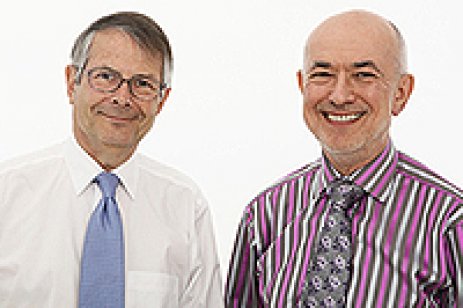Readers may remember the Holway theme for the years 2001 and 2002 when the SITS industry was in decline. We invoked the wartime ‘Make do and mend’ maxim. If you couldn’t afford new clothes, mend those that you have. Or, if you can’t afford a new IT system, maintain and upgrade the one you’ve got.
I was reminded of that several times over the last few days:
- An article entitled American companies are falling behind in technology in the FT on 13th Feb 08, by Bob Suh (Accenture’s ‘Chief Technology Strategist’) made the interesting point that only 32% of US execs said that wanted to be early (IT) adopters compared with 70% in China and 41% in Europe. Suh was making the point that early adoption of technology had been the main reason for US productivity gains in the last 30 years but that the US now risked losing that position. Suh made the analogy with heart surgery 30 years ago. “Taking no action, with a 100% chance of gradual death, is more palatable than having a procedure that has a 66% chance of sudden death”.
At the moment the economic outlook is so unclear that I believe that many CEOs will put off the risks (let alone the expense) of installing new systems and “Make do and mend”.
- At the Regent Conference last week, I reminded the audience that c90% of all SITS spend goes on running, maintaining and upgrading IT systems put in one or more years ago. Unless the company goes broke, this expenditure is a necessity not an option. Companies (and there are many, many of them) that concentrate their efforts on this part of the market will at least have an assured and predictable future – albeit rather ‘unexciting’.
- On Tuesday, Micro Focus issued a very upbeat statement saying that revenues were set to beat expectations. As I reported at the time, I met the then new CEO Stephen Kelly down in Newbury on his appointment in 2006. We had a typically ‘Holway’ conversation when I ‘advised’ Kelly to stick to his legacy (Cobol) roots and forget about all those previous plans to move into brand new areas. There was good logic here. There will always be a need to maintain and upgrade those legacy systems so why not exploit a captive market? Kelly took this to heart and I claim all the credit for him now being able to tell the FT – Micro Focus lifts full-year forecast - “We’re hopeful that we have a good defensive story. If economic conditions did worsen, it would play into our strength”. In other words “Make do and Mend” would be very good for old Coboler Micro Focus.
- They are not the only ones. Any company with strong legacy roots should weather the storm well. For example, accounting product suppliers with a good predictable support revenue stream. Customers are less likely to move to a new model anytime soon. The BPO and ITO players should also do well but need to watch the cost base. Renegotiated contracts will likely be at a lower price.



1 comment:
I received the following email from Martin Fincham, GM @ Lansa which I publish with his permission.
Hi Richard,
Just a quick note of thanks for a very incisive HotViews today. You are providing more value than some stuff we pay money for, but maybe I shouldn't mention that!
The topic of 'Made do and mend' sits close to our heart at LANSA because we, like MicroFocus, are servicing the legacy systems market, albeit that we are the largest independent vendor in the IBM midrange / RPG space as opposed to mainframe / COBOL. As a management team we have been chewing over the "will a mild downturn serve as a fillip to our business" question and we are also upbeat. The major threat to modernising these legacy systems is the perception that wholesale replacement is the only way forward - what tosh!
But when budgets are swelled you will always find an IT Director looking to make a name for him or herself by pulling-off some multi-million pound project. Many of these legacy systems run ERP applications so the tendency is toward replacement with a package like SAP. But those projects, even in a mid-sized company, can rarely be done for less than £1m so we anticipate seeing fewer of those migrations, in even a mild downturn, and expect more people to made do and mend. When people get their heads out of the clouds they often realise that their so-called legacy system is still a great functional fit, meeting 90% of their requirements, and what they feel they are missing (like web enablement or process automation) can be easily added with new software.
Cheers,
Martin
________________________________
General Manager, EMEA
LANSA
Post a Comment